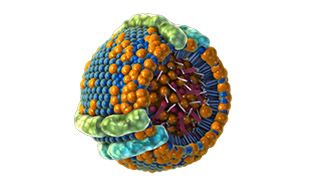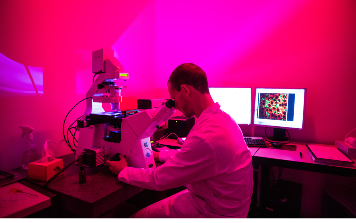High Density Lipoproteine
Low plasma concentrations of HDL cholesterol increase the risk of myocardial infarction and diabetes mellitus. HDL particles have many beneficial effects that protect the organism against chemical or biological damage, which may help explain the epidemiological observations.
However, efforts thus far have not been successful in exploiting HDL for the prevention and treatment of cardiovascular disease and diabetes. Based on these conflicting data HDL research at the IKC pursues the following research questions:


Which components in HDL are responsible for its protective functions?
HDL particles are structurally and functionally complex and heterogeneous. They carry a large number of different proteins and hundreds of different lipids and also microRNAs. This physiological heterogeneity is increased under certain disease states; e.g. inflammation, diabetes, renal insufficiency. Changes in the protein and lipid composition of HDL and modifications of the lipids and proteins have been associated with the loss of physiological functions and the acquisition of pathological dysfunctions. Detailed knowledge of the structure-function relationships of HDL-associated molecules is key to define their relative importance in the pathogenesis of diabetes and atherosclerosis, and to exploit them for diagnostic and treatment purposes. The IKC is working on this systems medicine research project in collaboration with researchers from the Departments of Cardiology, Diabetology and Visceral Surgery at the USZ, the Institute of Veterinary Physiology at the University of Zurich, as well as the ETH Zurich, the University of Lausanne and Charité teaching hospital in Berlin.
How do high-density lipoproteins cross the endothelial barrier in arteries?
Many functions by which HDL protect against atherosclerosis are performed within the arterial wall. However, it is not yet known how HDL reaches the subendothelial space. Altogether, it is not well understood how plasma proteins, for example also pro-atherogenic LDL, pass the endothelial barrier. We provided evidence for a specific, receptor- and transporter-dependent transendothelial transport of HDL. Potentially, this transport may be a limiting factor for the anti-atherogenity of HDL as well as the pro-atherogenity of LDL. Furthermore, the transendothelial transport of HDL is also potentially important for the transport of molecules through the blood-brain barrier The project is currently financed by the SNSF.
View research group